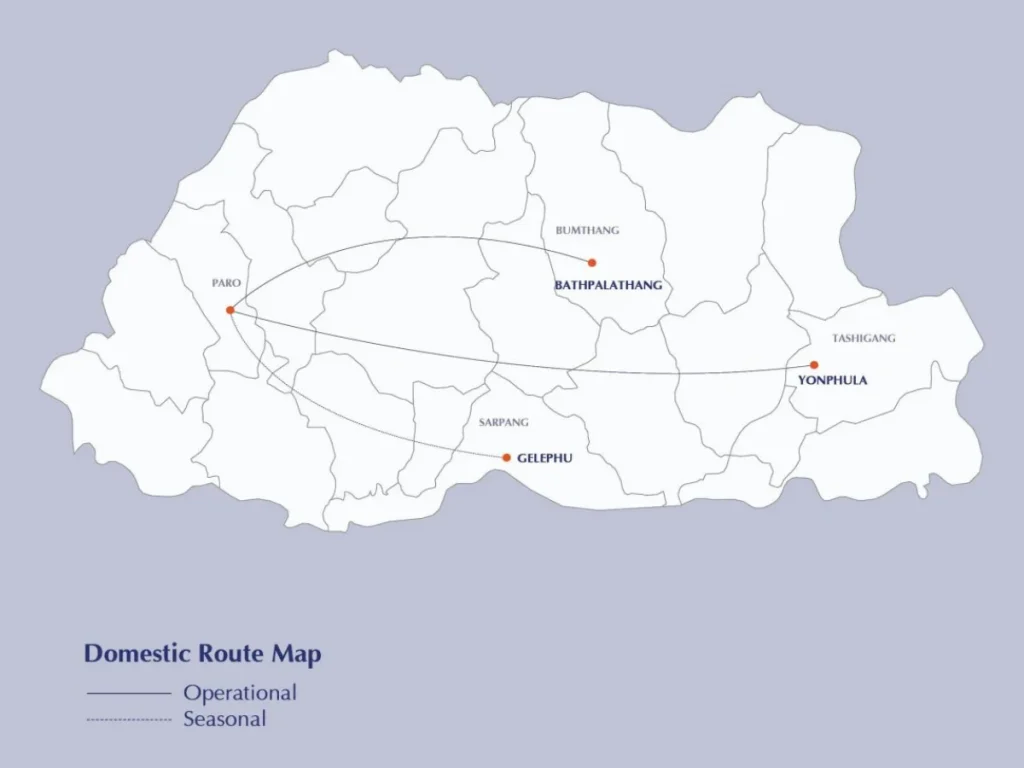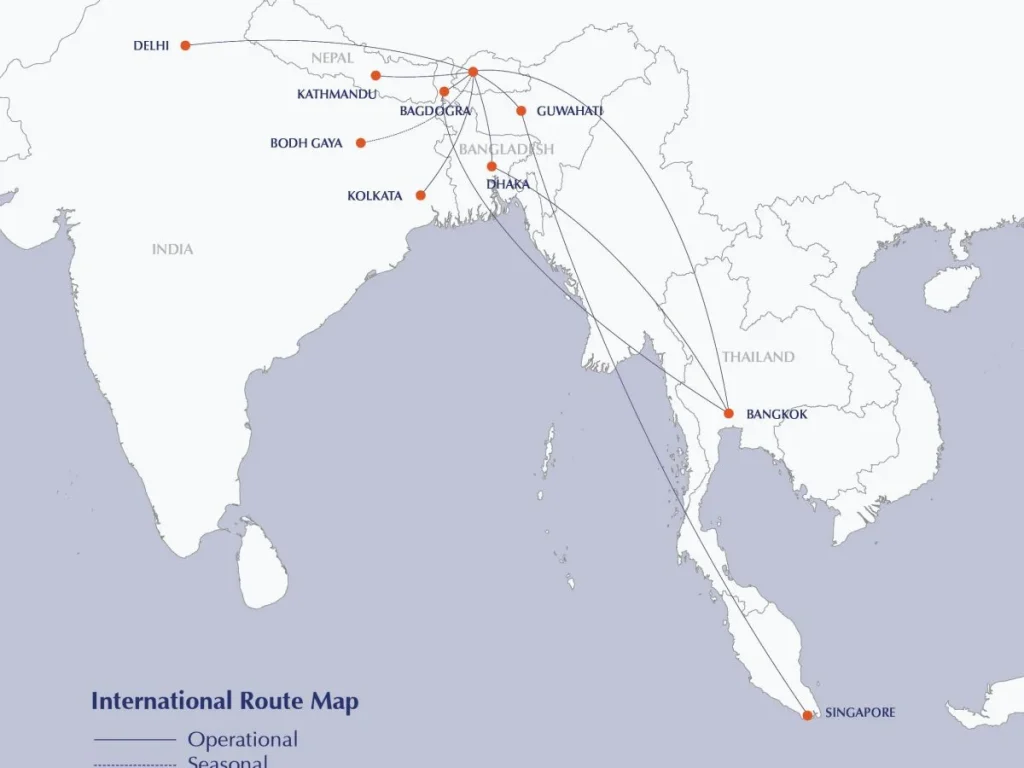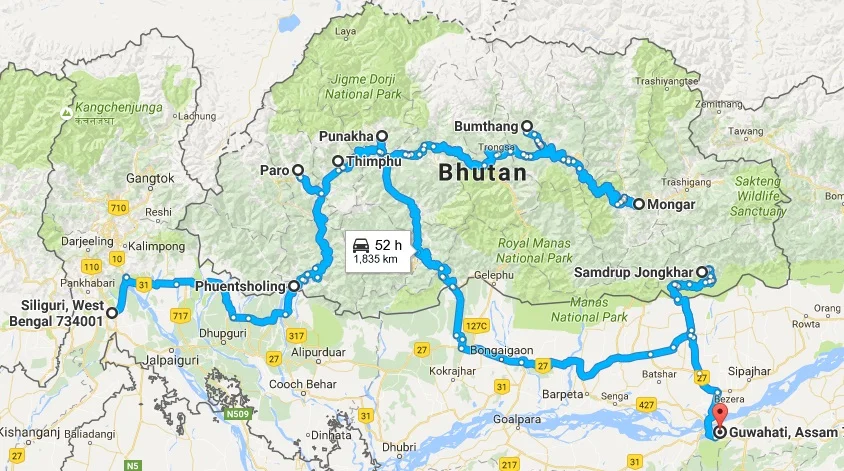Travel Information
Climate
Bhutan generally has four seasons in a year. Winter months in western and central region generally experiences warm days and cold nights. The temperature seldom drops below 0 degree Celsius and light snowfall is expected. Summer is characterized with frequent rainfall and humid conditions. The most favorable weather conditions are experienced in spring and fall. These periods are ideal for outdoor activities.
Customs & Duty free
Travellers can carry the following items for personal consumption:
200 cigarettes; 30 pieces of cigars or 150 gram of other tobacco
A person shall be allowed to import only one tobacco or tobacco product at a time as stated above. A proof or receipt of tax payment shall be valid only for one month from the date of payment of tax. A person importing tobacco and tobacco products from India for personal consumption shall pay 100% Sales Tax and at such rate as may be revised by the Board from time to time. A person importing tobacco and tobacco product from countries other than India for personal consumption shall pay 100 percent sales tax and 100 percent customs duty and at such rate as may be revised by the Board from time to time.
Note: While in Bhutan, visitors must retain the tax receipt to present to, if you encounter any checking by Tobacco Control Inspector.
Import/export of the following items is strictly prohibited:
- Arms, ammunition and explosives
- All narcotics and drugs except medically prescribed drugs
- Wildlife products, especially those of endangered species
- Antiques
- Import of plants, soils etc. are subject to quarantine regulations.
Visitors are advised to be cautious in purchasing old and used items, especially of religious or cultural significance, as such items may not be exported without a clearance certificate.
Money
Ngultrum is the local currency. The Ngultrum is pegged with the Indian Rupee at par. Foreign currency exchange services are available at the local banks. Updated foreign exchange rate information can be found at the local bank website and at the airport.
Banks have also installed many ATM across the country. The ATM accepts VISA and MasterCard. Service charges may vary depending on the country and the Bank of where the card was issued and therefore we recommend travellers to get in touch with their bank prior to travelling to Bhutan. Most hotels, restaurants and shops accept card payment as well.
Best time to Travel
Bhutan has a season for everyone. Kingdom stretches across all climatic zones, from the sub-tropical jungles in the south, to the moderate heights of 2000 – 5000 meters in the center and up to the alpine world of the towering Himalayas and glaciers in the north.
Winter:
Winter is dry and pleasant and makes it the best time of the year for bird watching in the jungles, village to village trekking in the lower altitudes or a bicycle trip along quiet mountain roads. The endangered Black Necked Cranes spend their winter in Bhutan.
Spring:
Spring brings the trekking season in moderate altitudes where spectacular rhododendron forests bloom. The largest monastic festivals, the Paro festival, take place. The temperature is pleasantly mild even up to the Alpine regions.
Summer:
Summer is the monsoon season but the settled areas of Central and Western Bhutan have pleasant summer temperatures. Rain falls regularly but is manageable with adequate planning and equipment. Treks in high mountain areas are characterized by mild temperatures, green meadows, and pastures of Blue Poppies and Edelweiss.
Autumn:
Autumn is the festive season in Bhutan. September and October have the highest number of festivals. Trekkers particularly enjoy the clear view of the mountains in October with low rainfall. Harvests, harvests rituals and festivals can add to your Bhutan experience.
Visa
All visitors require a visa before travelling to Bhutan (except those from India, Bangladesh and the Maldives, for whom the relevant processes and fees are outlined separately below).
As part of the visa application process, you will be required to pay the Sustainable Development Fee (SDF) of US$100 per day (per adult; concessionary rates apply for children). More information about the SDF can be found here.
A non-refundable, one-off visa application fee of US$40 is also payable.
You can apply online for a visa or permit by completing an application form, or if you’re travelling with a tour operator or staying at a hotel, they can apply on your behalf.
You can apply for yourself and anyone you’re travelling with, provided you have the required information for each person travelling.
To apply for a visa online you will need:
A digital copy of a valid passport
A recent digital passport photo
Arrival and departure dates
Valid travel insurance for the duration of your travel
Payment details
There are a few simple steps to follow when you apply for your visa:
Sign our Pledge of Friendship, thus committing to protecting, preserving and positively contributing to our kingdom
Create an account
Add your travel information
Pay for your visa application and the SDF fee for your planned stay
You can save your application at any time and return to complete it at a later date. Once submitted, it will be reviewed within five working days.
Visitors from India and Bangladesh.
Visitors from India require a permit. You may apply for this before travelling here, or if you’re travelling with a tour operator or staying at a hotel, they can apply on your behalf. No fees are payable in advance.
You can also apply at your point of entry, but please be aware that there may be a long wait depending on the number of applicants at the time. If you are applying for a permit on arrival, you will need a passport-size photograph. You must also have insurance for the duration of your visit, which you can prearrange or purchase upon arrival. Your SDF is payable when applying for your permit, either online or in person.
Visitors from Bangladesh and the Maldives require a visa, but the process is the same as the one outlined above for Indian nationals: you may apply and pay the relevant SDF online and prearrange your travel insurance before travelling, or you can do this in person upon arrival.
We recommend arranging your permit or visa beforehand.
Getting to Bhutan
Ways to Travel
Bhutan’s topography makes for EXHILARATING DRIVES AND BREATHTAKING HIKES. A fleet of transport options is at your disposal: from mountain bikes, motorbikes and yaks, to domestic buses and flights, SUVs with private drivers and helicopter services. Arrive by Air Bhutan has two national airlines: Drukair and Bhutan Airlines. Direct flights to and from our international airport in Paro connect you to Bangladesh (Dhaka), India (Bagdora, Gauhati, Kolkata and New Delhi), Nepal (Kathmandu), Singapore, and Thailand (Bangkok).


Arrive by Road There are four official entry points by road from India: Samtse and Phuentsholing (in western Bhutan), Gelephu (in central Bhutan), and Samdrup Jongkhar (in eastern Bhutan).

